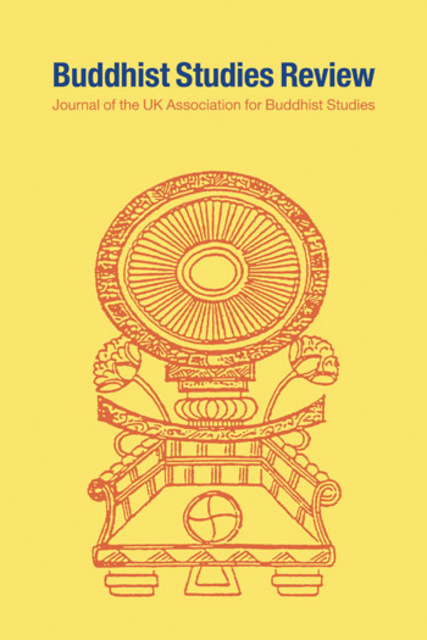Re-presenting a Famous Revelation: Dudjom Rinpoche’s Work on the ‘Ultra Secret Razor Lifeforce Vajrakilaya’ (yang gsang srog gi spu gri) of Pema Lingpa (padma gling pa, 1450–1521)

Full description
This article considers issues of authorship and textual development over the generations, focusing on the contributions of the erudite scholar/lama Dudjom Jigdral Yeshe Dorje (bdud ’joms ’jigs bral ye shes rdo rje, 1904–1987, hereafter, Dudjom Rinpoche), to the revelations of Bhutan’s national saint, Pema Lingpa (padma gling pa, 1450–1521), on the tantric deity Vajrakilaya. Dudjom Rinpoche compiled a number of ritual practice texts for this revelation cycle, also writing commentarial instructions on them. Here, two of his compilations are examined in detail, considering how they relate to the original revelation, what they add, and what they neglect, reflecting on what they might tell us about Tibetan approaches to continuing textual production in revelatory traditions. Much of Dudjom Rinpoche’s ‘Ultra Secret Razor Lifeforce’ Framework text for the Major Practice session (sgrub khog) reproduces virtually unchanged his earlier Framework text for the Dudjom tradition ‘Meteoric Iron Razor’, which itself draws on Guru Chöwang’s (chos dbang, 1212–1270) ‘Ultra Secret Razor’, as presented by Terdak Lingpa (gter bdag gling pa, 1646–1714), the founder of Mindroling Monastery in central Tibet. On the other hand, Dudjom Rinpoche’s main Ritual Manual (las byang) for Pema Lingpa’s cycle is more clearly rooted in the Pema Lingpa cycle, but there has been considerable re-working of the phrasing and even of some key visualisations. Some of the significant modifications were already present in an earlier Ritual Manual of the third Sungtrul (gsung sprul) or Pema Lingpa reincarnation, Tsultrim Dorje (tshul khrims rdo rje, 1598–1669), and Dudjom Rinpoche acknowledges this source. In assessing Dudjom Rinpoche’s two texts, various aspects of the productive process are highlighted, such as: the ‘blessings’ of a current generation high status lama connected with the tradition; the needs of the ritual community for familiar textual structures and liturgies; beautiful metrical verses for chanting; the integration of materials from the broader tantric heritage, but also the preservation of some highly individual elements of the revelation.
- typeImage
- created on
- file formatjpeg
- file size82 KB
- container titleBuddhist Studies Review
- creatorCathy Cantwell
- issn1747-9681 (online)
- issue33.1-2
- publisherEquinox Publishing Ltd.
- publisher placeSheffield, United Kingdom
- doi
We use cookies to analyze our traffic. Please decide if you are willing to accept cookies from our website. You can change this setting anytime in Privacy Settings.
